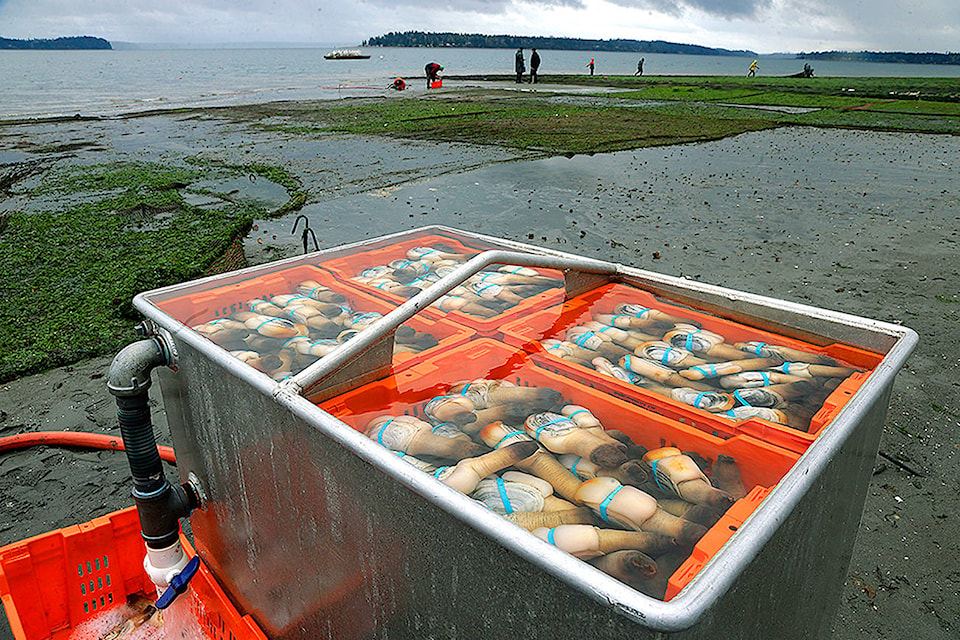B.C.’s seafood processors will soon have access to $9 million in federal funds to help them adapt to market instabilities and new safety guidelines brought on by the COVID-19 pandemic.
The money is western Canada’s share of the $62.5 million Canadian Seafood Stabilization Fund (CSSF) that Prime Minister Justin Trudeau . On Wednesday, June 17, government ministers provided specifics on the aid package’s distribution.
“COVID-19 has created real challenges for our fish and seafood processing sector, and they have continued to respond with tenacity and innovation,” Bernadette Jordan, Minister of Fisheries, Oceans, and the Canadian Coast Guard stated in a joint press release. “The Canadian Seafood Stabilization Fund will provide the sector with the support they need to increase their capacity and adapt their strategies to meet the changing demands of the consumer. And we know that by bolstering our processors, we are ensuring consistent buyers for our harvesters and a strong food supply chain, one that includes a consistent stream of Canada’s world class fish and seafood.”
In addition to the $9 million earmarked for B.C. and the prairie provinces, Atlantic Canada will share $38.14 million, while Quebec alone will receive $9.2 million. DFO has reserved $6.2 million to address emerging industry needs. The government calculated its funding allotment for each region based on the size of their processing industry.
READ MORE:
Christina Burridge, executive director of the B.C. Seafood Alliance, said the funding is very welcome to processors but B.C. deserves more than a 14 per cent share among four other provinces.
“The Seafood Stabilization Fund is unfair to British Columbia. Our share of the funding should have been higher … Quebec has an industry that’s worth around $450 million per year, ours is worth $1.8 billion per year. Yet, they get more than we do.”
She blamed the imbalance on an “genuine anomaly” in how Statistics Canada calculates its salmon aquaculture data, which she said is a complex problem that requires attention once the pandemic eases.
In the meantime she said the sector’s quick response to the pandemic with precautionary measures and layoffs to allow for physical distancing in the plants allowed processors to fare better than some other sectors, but alliance members are still facing mounting costs amid gutted sales. For personal protection equipment alone, she said a mid-sized processing facility in B.C. will have spent about $50,000 to get their employees through to September.
B.C.’s seafood industry is primarily driven by international exports worth $1.39 billion, as of 2018, but the pandemic has halted prime markets for high-end products. Burridge said its highly unlikely that gap can be filled domestically.
“Roughly half our wholesale value comes from live and specialty products like geoduck, sea urchins, sea cucumbers and herring roe. They will never have a domestic market of any substance, so we really have to be focused on regaining those export markets.”
B.C.’s $739-million salmon export sector also faced new challenges this week when state-run-newspapers in China reported a fresh COVID-19 outbreak in Beijing could be traced to a cutting board used for imported European salmon. China’s Centre for Disease Control and Prevention disproved the hypothesis, but B.C. exporters fear it will have lasting effects on China’s consumer confidence.
READ MORE:
The CSSF is intended to help processors increase storage capacity to better deal with raw materials and manage inventory, adopt new equipment to keep workers safe, improve product quality and packaging, increase productivity and respond to new market demands like transportation solutions.
The fund is open to fish, seafood, and aquaculture processing businesses, as well as not-for-profit organizations that support the sector.
Western Economic Diversification Canada (WD) will manage the fund in Western Canada. In B.C. applications can be filed beginning June 22 through the .
On June 16, the federal government also announced the re-opening of its $42-million Canadian Fish and Seafood Opportunities Fund in response to COVID-19 pressures. The fund was first launched in 2018 to help the industry access new markets. The program is cost-shared with provinces who cover 30 per cent.




